
Today’s awesome recording topic: Drum Microphones.
Here’s what you’re discover in the next 5 minutes:
- The 3 World-Famous Industry-Standard “Room Mic” Pairs Used in Countless Iconic Recordings Over the Past Several Decades
- The Instantly Recognizable “Green Grill” Mic For Kick Drums That Drummers Everywhere Know and Love
- The “Pencil Mic” Workhorse That Engineers Swear By — Not Only For Hi-Hats — But for Countless Other “High-Frequency” Instruments As Well
- PLUS… The Quickest, Easiest, and Cheapest Way to Mic-Up and Entire Drum Kit — Without Having To Buy a Half-Dozen Different Items
BEST PART: By the end of this post, you’ll be just days away from laying down some epic drum tracks for your next, or first – hit song. (Fingers-crossed).
First up…
How Many Mics Do You Need to Record a Drum Kit?
The truth is, there’s million ways to mic up a drum kit. Well maybe not a million, but a lot.
Depending on the:
- size of your kit
- size of your room
- number of channels available…
The total number of mics used for a single drum kit could vary anywhere from 2 to a dozen+.
Ideally, the more the better, but usually it comes down to a compromise between what you want, and what your resources will allow.
So today in this list, we’ll go through each of the standard tools used to mic up a drum kit, in order of importance.
Let’s begin. First up…
1. A Pair of Overhead/Room Mics for the Whole Kit
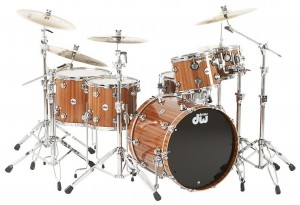
If you only have 2 channels to record an entire kit…
The standard setup is a pair of overhead/room mics, which provide a balanced stereo image of the drum kit as-a-whole.
And the standard choice for room mics is a matched pair of condenser mics, either large or small.
The 3 most common options used in pro studios are:
- Neumann KM184 pair – (Amazon/Sweetwater/Thomann)
- AKG C414 pair – (Amazon/Sweetwater/Thomann)
- Neumann U87 – (Amazon/Sweetwater/Thomann)
But as you can see, these are far too expensive for most home studios. So for average guys on a working-class budget, this article offers some great alternatives:
Up next…
2. A Specialty Dynamic Microphone for the Kick Drum

When using only 2 mics for the entire kit, the most important element of the kit, the kick drum, doesn’t get adequate coverage.
So if you can add a 3rd mic to your setup, it’s the next priority.
As with any bass instrument, with kick drums, a specific type of dynamic is typically used, that has a frequency response tailored to the low-end.
A classic example of this sort of microphone is:
- AKG D112 mkII – (Amazon/Sweetwater/Thomann)
For a more complete list of allternatives, check out this article:
Up next…
3. The Most Commonly Used Mic for Snare Drums
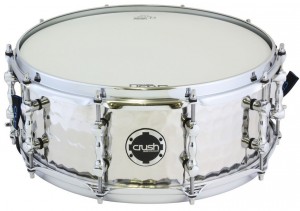
Alongside the kick drum, the snare drum is the obvious next most important element of the kit that needs more coverage.
So if you have 4 channels, it’s the next mic I recommend adding.
And for snare drums, there’s ONE mic that is used so frequently in pro studios, that it makes little sense for beginners to consider anything else…considering its price.
That is of course, the Shure SM57 – (Amazon/Sweetwater/Thomann).
Here’s what it offers:
- High Max SPL – to handle loud volumes without distortion
- Tight Cardioid Pattern – to minimize bleed from other drums, and handle more gain before feedback
- Durable casing – to sustain heavy beatings without suffering damage
Most importantly though…for whatever reason, the SM57 just sounds really good on snares. So it’s undoubtedly the easiest choice on the entire kit.
Up next…
4. A Small Diaphgram Condenser Mic for Your Hi-Hats
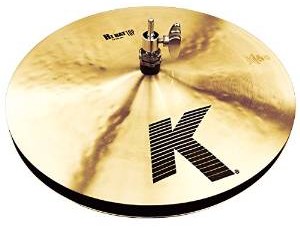
The next item that needs coverage is your most important cymbal for most styles of music: the hi-hats.
Because not only is it frequently played, it’s also furthest from from your room mics.
So without it’s own dedicated mic, it gets far less coverage than your crashes and ride.
Now….for hi-hats, the preferred category of microphone is a cardioid small diaphragm condenser.
And here’s why:
- Excellent high frequency detail – which is perfect for metallic sounds
- Ultra fast transient response – to capture the fast hi-hat playing
- Rejection of off-axis sounds – to keep your hi-hat track isolated from your other drums
One extremely popular hi-hat mic used in pro studios is the Neumann KM184 -(Amazon/Sweetwater/Thomann).
But since it’s too expensive for most people, the most popular option used by the rest of us is:
- Shure SM81 – (Amazon/Sweetwater/Thomann)
While there are plenty of other suitable alternatives, these two mics are so commonly used on hi-hats that there’s really no need to explore any further. Just pick one of these and move on.
Up next…
5. Industry Standard Drum Microphones for the Toms
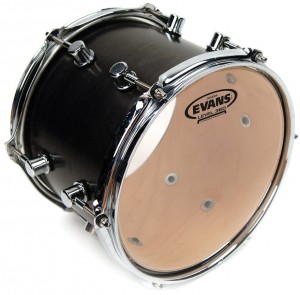
At this point in the list, we’ve covered all the essentials.
So any other mics you add from this point on are optional, depending on your needs and preferences.
For example, many engineers will elect NOT to mic each tom individually, since they aren’t a super important drum, and they already get decent coverage from the overhead/room mics.
Of those who do, one option is to use the Shure SM57 – (Amazon/Sweetwater/Thomann) since most studios already have tons of those lying around.
However, most people prefer the fuller, rounder sound of the classic dynamic mics with larger diaphragms. These include:
- Sennheiser MD421 – (Amazon/Sweetwater/Thomann)
- Electrovoice RE20 – (Sweetwater/Thomann)
The problem with these choices is that they’re larger, more expensive, and kind of a hassle to mount on such a non-essential drum.
So a third option that solves this problem is the Sennheiser e604 – (Amazon/Sweetwater/Thomann), which is cheaper, extremely tiny, and easily mounts directly to the rim of the tom.
While it may not be as ideal as the earlier options, it’s more convenient, and far better than nothing at all.
Up next…
6. Optional Microphones for Rides and Crashes
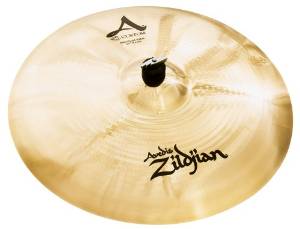
Just like with toms…sound engineers typically elect NOT to mic the ride/crash cymbals individually…
Since they already get good coverage from the overhead/room mics.
However, if you do decide to mic them separately…the standard option once again, is a small diaphragm condenser mic.
While there isn’t really a standard rule of thumb for what to use here, the most obvious choice is using one more of whatever you use on your hi-hats, such as the:
- Shure SM81 – (Amazon/Sweetwater/Thomann)
And finally to wrap up this post…
Drum Microphone Bundles to Keep Things Super Simple
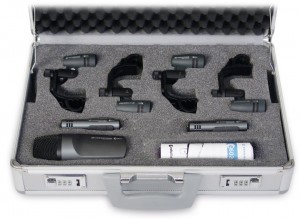
Now that we’ve gone through the entire drum kit..you can see how miking up an entire drum kit can potentially require a lot of work, a lot of mics, and a lot of money. Correct?
So one way to make things easier is to opt for a drum microphone bundle, rather than purchase everything separately.
You won’t get any of the classics that I recommended in this post…but you WILL get an entire solution to this problem in a single case, for a single sticker price.
Overall, many people find the compromise to be more than worth it.
The 2 best ones I recommend are:
- Sennheiser e600 – (Amazon/Sweetwater)
- Audix DP 7 – (Amazon/Sweetwater/Thomann)
And if those are too pricey, here are 2 more options:
- Shure PGDMK 7 – (Amazon/Sweetwater/Thomann)
- Audix FP 7 – (Amazon/Sweetwater/Thomann)
By the way, if you found this post useful, I highly recommend joining our free Home Recording Secrets email newsletter where you’ll discover….
- How to Get Your First Studio Up and Running in a Single Weekend
- How to Avoid Wasting Thousands of Dollars on Unnecessary Pointless Purchases
- How to Get a “Million Dollar” Pro Studio Sound in a “Thousand Dollar” Home Studio
- PLUS… All Sorts of Other Amazing Insider Secrets Revealed
And it’s totally FREE! Click here and Enter Your Email to Sign Up.